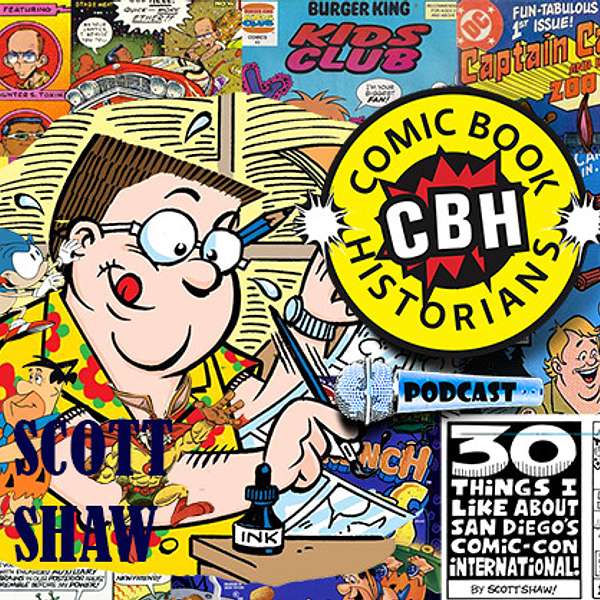
Comic Book Historians
As featured on LEGO.com, Marvel.com, Slugfest, NPR, Wall Street Journal and the Today Show, host & series producer Alex Grand, author of the best seller, Understanding Superhero Comic Books (with various co-hosts Bill Field, David Armstrong, N. Scott Robinson, Ph.D., Jim Thompson) and guests engage in a Journalistic Comic Book Historical discussion between professionals, historians and scholars in determining what happened and when in comics, from strips and pulps to the platinum age comic book, through golden, silver, bronze and then toward modern
Support us at https://www.patreon.com/comicbookhistorians.
Read Alex Grand's Understanding Superhero Comic Books published by McFarland & Company here at: https://a.co/d/2PlsODN
Series directed, produced & edited by Alex Grand
All episodes ©Comic Book Historians LLC.
Comic Book Historians
Scott Shaw! Interview, the king of cartoons part 2 with Alex Grand & Jim Thompson
Alex Grand and co-host Jim Thompson interview animation wizard and cartoonist, Scott Shaw! talking about his involvement in Underground Comics in the late 60s, early 70s, co-creating the San Diego Comic Con, Hanna Barbera Comics, creating and producing Saturday Morning Cartoons like the Flintstones, Muppet Babies, Camp Candy, Ed Grimley, etc, making Saturday Morning Cereal Commercials, contributing to Disney Films, his 40 year career span as a Comic Historian researching Oddball Comics, and his conversations with people like Rod Serling and Chester Gould. Edited & Produced by Alex Grand. #ScottShaw #Flintstones #MartinShort #HannaBarbera
Shaw!: Yeah. I mean, we had Ghostbusters… I ordered the very first Star Wars episode. The one I enjoyed the most was… This was back when our story editor was Jeff Scott, who was Moe Howard’s grandson. So, at the time… It changed after that, significantly, but his family was more or less in control of everything. He got us the rights to use the Three Stooges. I got to do a board where it was Fozzie Bear in a pie fight with the Three Stooges. The footage from one wasn’t enough. I got to take, I think there are three or four Three Stooges with pie fights. I got to like, bastardize all of them, cut them apart… I thought, “God, why didn’t I get to work with the Three Stooges? This is absolutely the greatest thing ever.”
I once had a dream; my wife woke me up because I was laughing. “Why are you laughing?” “I dreamt the Three Stooges came to visit me and all I kept saying is, but you’re dead.”
[chuckles]
Alex: “You’re dead. It can’t be real.”… But you know Muppet Babies was great because generation X kids like me could actually see like old ‘30s, ‘40’s, ‘50s movie footage. And then for me, it was like a gateway to try to find out what that stuff was all about.
Shaw!: Well, that’s the thing. We aimed that the kids who are aspirational, in terms of… When I was a kid, for example, I get MAD Magazine. I didn’t know what the political stuff was. I started reading the papers so I would know who these people were. I mean, the dummies are just going to go, “Oh, that’s funny.” So, if you’re smart, you’re going to ride it on in a number of levels.
Muppet Babies episodes I loved the most, and I didn’t work on these, are the ones where they go to the art museum. I don’t know if you remember, but they actually have some chyrons in some scenes where it said who actually owns the rights to this. And the one I like the most is where they talk about the history of cartoons… “Love cartoons…” you know the one. And they’re all dressed up as Popeye, well that almost makes me cry.
Alex: Yeah. It actually gets me emotional, because that’s like the foundation of my pop cultural curiosity. I think Muppet Babies was that, because I was like six when it came out. And I was like, I need to find out who all these characters are. That was like the beginning for me to be curious about old Hollywood, and all sorts of stuff.
Shaw!: After a certain point, the producer just started giving me song sequences, because I liked doing those, because they just give you a song, and say, “Here, come up with the visuals.” And the one that I thought was the most successful that I did, was the one where Gonzo is singing about being a semi-weirdo. And we kind of parodies of a lot of Greek paintings. My producer, suggested it, he says, “Why don’t you take a look at the Greek, that might give you some ideas.” He’s name is Bob Richardson.
[01:20:00]
He’s still around, and he was like guy that kind of, without intentionally doing it, he kind of set how I should be if I ever got the job as producer. But he was constantly in fights with management about deadlines and stuff because he said, “Wait a second, we’re expected to make this thing good. It’s Jim Henson.”
The second show that got cancelled after, I think, two episodes because we did it on the fly and it was terrible. It’s called Little Muppet Monsters. You can see them on YouTube but it was a real poorly thought out thing to extend the brand but it just felt artificial.
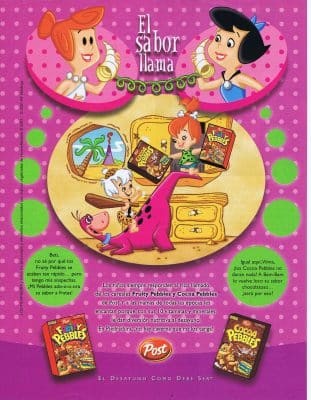
Alex: Yeah, I remember, even the Wolf Man, and all the old Dracula footage, all that stuff. It was all infused to me through Muppet Babies.
All right. So, then 1987, Popeye and Son. Why was it only 13 episodes?
Shaw!: Because it was Popeye and Son.
[chuckles]
Shaw!: That’s probably the most loathed cartoon ever in existence. Other than that new one, that King Features is doing. Because, I mean, they got Bobby London to do character sketches, and rejected them. That’s how oblivious H&B and CBS were too.
I was a writer by that time. I submitted, I don’t know, maybe a dozen springboards. Actually, no, not only springboards, but I think three or four scripts. And each one would just come back with the scripts scrolled across, “It goes too far.” Because, I thought…
Well, for example, one of my thought, “Well Popeye can’t be punching people”, and they said that if it was something that the Standards and Practices said it was a “non-imitatable” action, they might consider it. So, I had a story that I was really pleased with, where Bluto does something to Popeye’s spinach patch, thinking it’s going to kill all the spinach. But instead, it makes then into super spinach, when Popeye eats it, he’s kind of like the Hulk. Then they both eat it. And then in the show, Bluto was a used car sales man. So, I wrote it so it happened… So, then they’re having a fight, trying to hit each other with used cars.
[chuckles]
And they hate it, “They can’t do that.” “Well, neither can kids. So, that…” “No, you can’t. That goes too far.” I mean, I had one set up in circus. I thought, “Okay, if he can’t be punching people…” “Yeah, that’s aggressive.” But they didn’t want anything going on. The one that finally made it through was one on the Jeep. And I had the whole Jeep take place in the fifth or fourth dimension. I forget which dimension. And they said, “No, it can’t be that. Kids don’t know what the fifth dimension is.” I said, “Neither do we!”
Alex: Yeah, we don’t know either. But it’s a great concept to introduce. Yeah.
Shaw!: And it was all about, Popeye’s son is going to his first prom, Junior Prom. And he buys an orchid, for somebody and then Jeep grabs the orchid, because Jeep eats orchids. He chased him and then Jeep goes in to a portal and he jumps in after him. So, it all took place in Sweet Haven, and it was just horrible. I’ll never forget, I was at the table read and Don Messick, famous voice guy, and he’s sitting there and he looks at me and goes, “What the fuck is a Jeep?” [chuckle] Nobody was happy about the show, obviously.
Alex: So, now Garfield and Friends in 1988, were you and Evanier working on that together?
Shaw!: Well, only in that I was doing his scripts. I was working on the scripts and he was working on the boards, but I’ll tell you, having worked in animation for an awful long time, I can tell you that most animation writers, do not have the sense of the visual.
When I was at Marvel, I didn’t have to do it because… I think it was from a Transformer, or G.I. Joe?… But everybody was moaning about it. Somebody was given a script in which there was fight between two jets inside the circus tent. So, there you go… And sometimes, it’s just simple stuff too, like having a guy climb a ladder carrying 15 different things at the same time. You can’t even do that for comedy’s sake. What’s he hold on to going up the ladder?
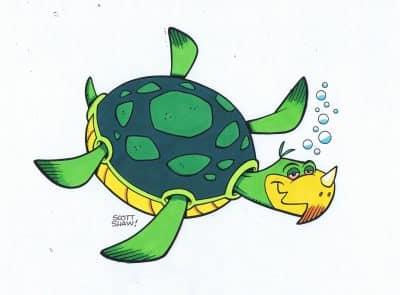
So, it’s like, when Mark was doing scripts, you could plus them. You could add little funny bits here and there. They didn’t need too many but you could stage in a funnier way than he described. But most scripts, you’re just trying to fix them so they work at all. Because even the best writers, they’re just writing words. They’re not thinking about it in pictures the way cartoonists write. John Kricfalusi has milked that to death about, “Nobody should be hired as writers in animation.” I don’t think that. I just want to get writers that know how to visualize, like Mark.
The only other guy I knew that wrote that well was a fellow that’s no longer with us, named Earl Kress, who was a friend of Mark’s.
Alex: Now, these two projects are really interesting. Because it has some involvement like SCTV, Canadian comedians and things. You got, Ed Grimley-1988 with Martin Short, who voiced Ed Grimley, Eugene Levy, and some other SCTV people were kind of in it every now and then.
[01:25:02]
Shaw!: Eugene was in it once. Our main staff was, of course, Martin, Andrea Martin, Catherine O’Hara, Joe Flaherty and Jonathan Winters. And as much as I loved SCTV, working with Jonathan was the big one for me. He was my first hero that wasn’t a cartoonist. I didn’t know he was also a cartoonist at the time. Since then, he’s given me his cartoons, and even a painting. We worked together on a book that never got published.
But yeah, Ed Grimley was one of those things that was picked up at the very last minute. The very last minute. And I’d never produced anything. They kind of set me up with another producer who didn’t do anything and he was a nice guy. He also drew comics, named Kay Wright. He did the Junior Woodchucks that Carl Barks wrote. He worked over Barks’ layouts. We had lots to talk about when I was in his office, at least. In fact, he drew the first Hanna-Barbera comic that I inked.
But the Grimley thing was… I wish I could say it was fun, and it was fun at times, but I think it was the closest I’d ever come to a nervous breakdown. Because I could not adjust to the idea of turning out something and knowing how many flaws were in it. And the first episode was done in three different studios, at once, which is a never good idea, because things don’t hook up or match. They were all in the Orient, I think two were in the Philippines and one was in Taipei. It came back about a week before it went on the air, which was probably the biggest margin I’ve ever had to fix something for the show.
I’ll never forget though, because of this, probably my most significant experience in animation happened. Bill Hanna and I, Bill was showing me how to edit a film. I never actually, physically done it. This was before Avid and stuff. This was when we were just literally cutting film, and splicing it together.
And because Martin Short refused to let us cut anything in the script, the show went out 600 feet long. Which is like making another cartoon, practically. We had to figure out what to keep. It was like taking steak and turning it to hotdogs because a lot of the connective stuff was just missing.
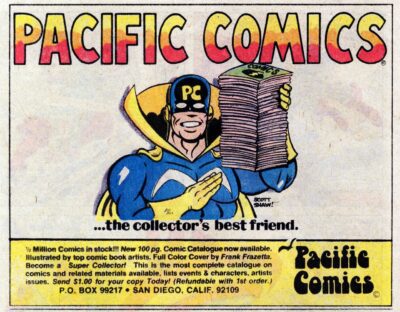
Shaw!: But we got the thing, it kind of worked. All the characters’ mouths were saying the right voices. Which is a big problem, coming from overseas. And I thought, “You know, this looks pretty good. This looks more or less like the board we intended.” And he was kind of making the poses that we wanted. So, we were delighted.
Advertisement
I wasn’t there. I left early one Friday, because the next day was my birthday, and I thought, “I’m going to go home at 3 o’clock and just take a nap.” I get a call at 5 o’clock, waking me out of the nap. “You got to get over here. Martin Short’s throwing a tantrum.” He was very upset, and I could understand why, because he was told that this was going to look like the finest Warner Bros cartoons by the executive producer. And the executive producer never took responsibility for that, so I had to keep Martin Short happy.
As we worked together, Martin became happier and happier with my work. He had to do a movie and we kind of had time to catch up on our scripts. So, when he came back from the movie, I’d come up with a scheme. And what happened was, I would go over to his house with the new script, and I’d video tape him reading any of the scenes that worked him being chased or doing something really cartoony. I have mapped it out.
Then I asked one of my best artists, the guy that did the Ed Grimley design that we wound up using, sculptor, actually. He gave me all these extreme poses that Ed Grimley hits. Because Martin Short seems to think that the people overseas all knew who Ed Grimley was. And we had to point out saying, “No, they probably don’t, and even if they do, we want to do it the right way.”
So, I really, really found a way that worked, and he was happy with it. They didn’t rotoscope it, what they would do is, “This is just where to see, on this word, he hits this pose” and on the sheets, we just lettered all the poses. “Okay, goes from E to B, then back to E, then to F”, and timed it. So, suddenly, he was delighted with the show. And that’s why I wound up working on John Candy’s show, because Martin Short recommended me to John Candy.
Alex: Okay, so that’s how it happened with Camp Candy then.
Shaw!: We would have gotten a second season of Ed Grimley at MeTV, but Bill Hanna had so many problems trying to get the scheduling, because Short was still making movies and stuff. He said, “I’m never doing that show again.”
Alex: Oh, I see. It’s just too much, logistically, to balance… So then, Camp Candy, went from ’89 to ’92, and John Candy, now, was part of that production. How did that compare to the Grimley show?
[01:30:04]
Shaw!: Well, I’ve always wished we had done it done at Hanna-Barbera, because John was always there. He was easier to work with. Martin was easy to work with too, but his schedule was crazy. But John and I became really good friends. I found out, years later, that one reason I was hired, wasn’t just because of Martin Short’s recommendation. At the time I weighed over 400 pounds, that would reassure John, because people just looked at us as freaks, I think. But what it was is, it actually worked out great. Because, again, it was a very light pick up, it’s NBC’s, same network, and I felt, “I’m not going to waste any time trying to please John. I’m going to find out what he doesn’t like and find something he likes.
Shaw!: So I thought, I know lots of cartoonists. I was given $10,000 as development money. I hired a guy to do backgrounds, and the rest of the money, I called my cartoonist buddies, and I said, “Give me $500 worth of drawings or sketches of how you would draw John Candy.” For most of my friends, that was about a half day’s work. So, I figured, we’re going to have a winner and many losers. He hated them all. Everybody drew John like a mudslide. People, I guess understandably, focused on his weight and stuff, instead of his face. He hated every one of them so when I went home,
I’m like… I told Judy, I said, “Man, I am screwed. Now, I’ve got to figure it out, and I’ve got to figure it out fast.” She said, as she often does, very smart things. She said, why don’t you just draw Candy the same way you draw yourself on your business card?” I said, “What do you mean? She goes, “You kind of draw yourself fat but you kind of draw yourself Fred Flintstone fat rather than morbid fat. I didn’t say like you’ve got…”, but I mean I was.
But in any event, I whipped something up. John loved it. I thought, “Shit. I could have paid myself $10,000 for one drawing.” It worked out that way and John was a comic collector when he was a kid, and when he died, I was in the process of trying to get together some of the comics on the list that he told me that he liked to have again.
The last time we met was with Christopher Columbus… No, it was John Hughes. It wasn’t Christopher, it was John Hughes. And the three of us discussed me producing and directing a series of shorts that would go in front of every John Candy, with all these characters from SCTV and new ones. And of course, it never happened.
And I had a TV special called Halloween Candy that I’d plotted out for him that he wanted to do. But poor John left us. His family had a history of heart problems, so I think he lived the big life knowing that he was going to die young. His dad died when he was about four years old… That week was going for quite a while, so making that movie is what killed him, the atmosphere. Mexico City is a very elevated city.
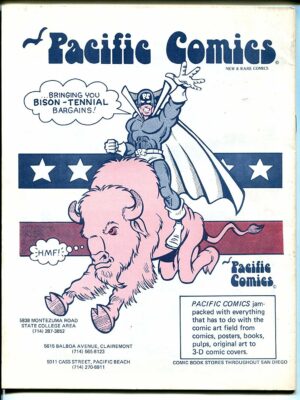
Alex: After that, you worked on the 1994 Fantastic Four Cartoon Series. And that one is my favorite of the Fantastic Four cartoons that have been made, because a lot of the plots are straight from like the first 30 issues of the 1960s Kirby and Lee, Fantastic Four. Stan Lee actually would do some intros in those episodes. I loved those because it felt like I was reading the Marvel Masterworks all over again.
Shaw!: They also did introductions for the first season which was horrible. If you remember the first season.
Alex: Yeah, that was a different… It was different, yeah.
Shaw!: But it really was because their new story editor and our producer Larry Houston, an old friend of mine who was the producer, who worked with Jack.
Alex: Uh-hmm. And he worked on the X-Men cartoon too.
Shaw!: Although, because Jack was gone, he hired John Buscema to do the models. He knew what the guys to get. The only episode I worked on was what we call a cheater, where we used a lot of footage from the other shows. I had to come up with scenes that were only with the Human Torch, the Super Skrull, Impossible Man, and Lockjaw the Dog. It was essentially a comedy episode, except for the flashbacks that were just clips from other cartoons. Though I really enjoyed working on the Impossible Man.
Alex: Yeah, Impossible Man, for sure. Because that’s like Plastic Man in a way. A cartoon character that you can put on a superhero strip.
Shaw!: But I was also delighted because Fantastic Four is by far my favorite superhero concept. And I still will buy that comic to the day I die. I even bought the ones that Steve Englehart wrote, where they’re wrestlers or something, I mean, it looks like. They don’t need a gimmick, it’s a family.
Alex: I like all those issues… I’m just going to go through a quick checklist because we could go all day on this stuff because you’re so prolific. But I want to knock through this checklist, and Jim’s going to go over convention stuff and some more comic stuff.
Just so the audience would know, you worked on: What’s New, Scooby-Doo? (2002), Duck Dodgers for the Cartoon Network (2003), Mickey’s Twice Upon a Christmas (2004), Mulan 2 (2004), that was a busy year; Krypto the Superdog, American Dragon: Jake Long, Jimmy Two-Shoes.
[01:35:03]
It sounds like just your skill set kept magnifying and building on itself, as you were knocking out the next assignment and the next assignment.
Shaw!: Well, I like to do cartooning, and I like to do a lot of different things at any given time. It actually helps me keep organized. I like having the animation job, and the print job at the same time, or a writing job, and a drawing job at the same time. These couple of years, I’ve been illustrating a couple of children’s books, and then working on a couple of comics and other gigs in my spare time.
So, it keeps you fresh, it keeps you thinking, otherwise, you just kind of fall in to a funk. I mean, I really understand why somebody who had worked on comic for a long time, would request to be put on another comic, just to draw different characters. After a while you feel like, “God, I’ve drawn this thing in 800 poses, and I know every one of them.” You don’t want to feel like somebody that’s touring that was a one hit wonder, and just has to play that same song over and over, and over.
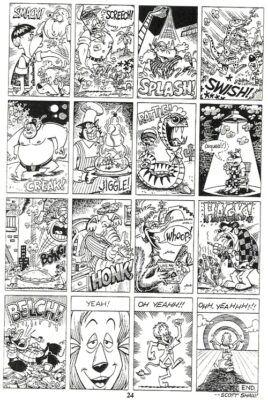
Alex: Yeah, that can be its own nightmare, actually. Yeah.
Shaw!: Even when I do commissions. I usually say, “Okay, do you want a happy Fred? You want a yelling Fred? You want an angry Fred?” I just like to keep enough variety so it doesn’t become ordinary.
Jim: Okay. Back to Captain Carrot. Let’s talk about the origin of that. You had said that Roy Thomas came to you, were the visuals… And you’re talking about DC interfering with that a little bit. But were the designs mostly your creation? How did you and Thomas work together on this?
Shaw!: Roy and I would get together with his wife Dann, and have a spaghetti dinner at their house, and then come up with ideas. And Captain Carrot actually did not originate with me. Roy had been planning on doing a Captain Carrot with Sam Grainger back in the ‘60s. He was the cartoonist who did the Sentinels back up, I think, it was the Fightin’5, or one of the Charlton books. I remember at the time, I thought. “That’s like looking at me drawing Steranko.” Because he was pretty cartoony. And then he wound up becoming an inker at Marvel.
But they never did anything with it. I think he did one drawing, like kind of a Mighty Mouse looking version of Captain Carrot, and I saw that long after I ever did my work on it. But Roy, we’d been friends after, since I worked on What If story. And Roy used to throw lots of parties and stuff, I’d be over at his house, and we’d been talking about working on something else. I don’t know if he’d pitched them to DC but I think DC had mentioned to him to come up with something that they can make into a cartoon show.
Initially, we developed a thing called Super Squirrel and it just had a lot of animals, who actually would up turning up in the comic a few times later. But they were based on the DC heroes. And then they came to us. I did a couple of pages of designs and then a couple of kind of try-out pages. I think I had like a giant carrot who looked like Galactus attacking the Earth.
Then DC said, “We changed our mind, we want you to create new characters, not characters based on our existing characters because that’s not really selling new IP. It’s just a variation on it.” And I thought, “Well, that kind of makes sense.” So, then Roy and I started kind of thinking about what do we need for a standard team? And created a bunch of characters between us, with a lot of input from Dann.
Gerry Conway gets a credit on it, or at least back when they were putting our name on it. But I think that was just a deal between him and Roy because they were slopping points on the things that they’d created at DC.
So, we had a team and we had a couple of extra characters we’re thinking about. One was called, Whirly Bird, and one was Little Cheese, who we later brought in as… No, he’s called Big Cheese. He was like Giant Man. And then we decide not to… But then I pointed out to Roy, I said, “We need a big guy on the team. A guy that’s like The Thing.” “He wasn’t a big guy but he was a muscle guy.” I said, “Besides, we need a bigger guy to stick in the background when we got them all together.”
And so, I came up with the Pig-Iron on my own. And I have to, once again say, even though I loved Gilbert Shelton in Wonder Wart-Hog, Wonder Wart-Hog really had nothing to do with it. I came up with the name first. I was just trying to come up with puns. So, in no way it’s a rip-off of Wonder Wart-Hog.
Jim: Those characters in that comic had a longevity. I mean, it’s a much-loved comic for a lot of people of that particular era and generation. Why do you think that’s so?
Shaw!: It has a lot of meaning to anyone, as long as they don’t work at DC Comics. Please understand that. I live 15 minutes away from DC Comics. I’ve never even been invited to come over to sweep up the lawn, sweep up the floor from the shavings. I think Captain Carrot is liked because it’s unusual in its day. I’ve been told by a lot of kids…
[01:40:01]
Well, guys in their 40’s now, that it was kind of like an underground comic for kids because I was kind of listening to Jack Kirby about “draw it your own way” and yet at the same time, imitating Jack Kirby because that was part of the concept that made it new and fresh in our minds, was what if Mighty Mouse was drawn by Jack Kirby?
Even though I think there were too many puns, it got a little weary, and quite honestly, when I wrote it, I wrote way too much dialog because I was imitating Roy, but not knowing what I was doing. Roy wrote a lot of dialog too, but not like me. I really overdid it. But the tone on the books, we both kind of were trying to think of Carl Barks, because even though they’re fun and funny, there’s kind of like some real stakes going on. It was an adventure story like one of the longer Uncle Scrooge’s. It’s an adventure story, it’s not solved by a funny gag at the end. It’s pretty straight, with just animal stunts running around.
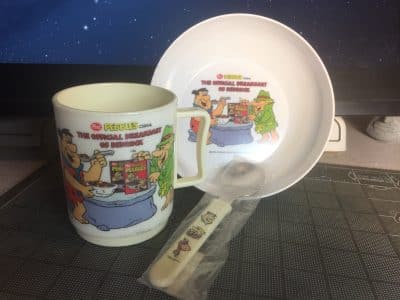
We both got that kind of attitude with Captain Carrot. It’s like, let’s make it straight and then Geoff Johns came along and had Little Cheese killed, so then we really got like a superhero book.
Jim: Now, did DC seem to have at least have some investment in it, in that as I remember, you had a sneak preview in the Wolfman-Perez Teen Titans, is that right?
Shaw!: Yeah, that’s how they’re prioritizing all their new books though.
Jim: Yeah, because Teen Titans got a preview that way as well. But to put Captain Carrot in that, it would seem to indicate that they had some hope for its success.
Shaw!: Sure. It was never considered a kiddie comic, until recently
Jim: They did a new version of it, not that long ago. Did they reach out to you at all? Did you have any…?
Shaw!: No. They didn’t reach out to me in the slightest, nor Roy. Nor Roy. They asked Paul Dini if he knew anybody that would be good. And Paul Dini suggested my friend, and at the time, my editor at Bongo, Bill Morrison. And Bill Morrison said, “Yeah, I can do it but why haven’t you asked Scott Shaw?”
They said, “Well, if that’s who you want to work with, I guess you could work with him.” And then he asked me, and then I did it. I wound up actually, kind of secretly co-writing a lot of it with him. And I didn’t get paid a single cent for that, but that was fine. I at least wanted to have some input in to it. Roy was understandably, quite upset for quite a while. But it wasn’t anything that Bill Morrison had engineered. They came to Bill.
Warner’s really let me down on that thing. It was supposed to be a six-issue comic. They actually specified where it started and where it ended in terms of the plot. Because they wanted to tie it in to one of those mega events. It never tied in to the mega event, and they said, “This will be considered a regular mainstream DC Comic.” They wound up paying me ‘for the kids’ rates. They said, “This will be a perfect superhero DC Comic.” In the center spread, they put a sixteen paged commercial for Goldfish Crackers, that looked like it was written and drawn for children that couldn’t read yet.
I’m not crazy about DC.
Jim: That’s your interaction with DC that you said you have some grievances with.
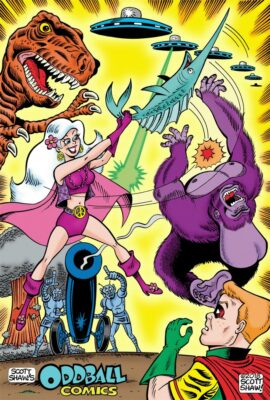
Shaw!: Well, or non-interaction with them. They haven’t called me. They published new Captain Carrot stuff. And if you seen my work, quite honestly, I draw better than I drew back then. But quite honestly, I’m getting a taste of the fact that comics were created by gangsters.
Jim: So, besides DC… Well let me ask it this way. Was that experience with DC the worst experience you’ve had in professional comics in terms of being ill-treated or cheated?
Shaw!: No, I think Archie is probably the king of that.
Jim: That’s where I was going with that. Because that actually turned into litigation, well, you got caught up in litigation.
Shaw!: No, I didn’t get caught… I’d done some… What do you call it? Not testimonials but… deposition for them. Yeah, I did Sonic the Hedgehog, and I did the first issue #0, and the first whole two issues after that, and I did the cover for the #3. They called me up and said, “Well, would you like to do this?” I was working with the ad agency at the time. But I said, “Sure.”
And I wasn’t a gamer. Sonic is a brand-new character to me. In fact, one of the ways I was ripped-off was, I did this whole issue #0. Nobody told me that they were going to be reprinting it to give away for free, as advertising for the game at Toys’R’Us, in millions of copies, because that’s a second usage right there. They also did a third version, an eight-paged version, that they gave away.
But that’s not enough. At the time, I was working in advertising. I was doing the Pebbles cereal commercials. I was also doing the Pebbles cereal comic book ads.
[01:45:00]
I was also doing the boxes and the toys. But that’s beside the point. Anyway, I was getting paid a very, very hefty amount for each one-page ad. And meanwhile, from Archie, I’m getting like, $200 a page for… I wouldn’t get that much, I didn’t ink them. So, I felt that when Archie started reprinting my stuff, I never signed any kind of a waiver. I don’t remember the check having the thing on the back saying, “I give away rights.” But at that point, if I did get that, I’d crossed it out, and cashed it anyway. They couldn’t do anything about that.
They haven’t done that just to me. There are a number of people whose work they constantly reprint, who never signed any kind of a waiver. And that’s why there’ve been so many people after them. And they aren’t doing anything much about it. I think they may have settled with Ken Penders, the first guy that was doing it after that. Archie is an extremely… I mean, I love Archie Comics, don’t get me wrong. But the family nature of that outfit, there’s an arrogance in that company that is unmatched.
Jim: What was your experience with Bongo Comics?
Shaw!: Nothing but good, until Bill Morrison left. [chuckle] That never happened to me before. The new editor just loathed my stuff. Never got a single… By the way, Sergio never got a single assignment from me during this, Sergio’s working on The Simpsons Comics at the time. Sergio Aragones.
Jim: Oh, yes, we knew who you were talking about. Which reminds me, I wanted to ask you about doing the Ramones Project for Rhino. Because Sergio did that incredible piece on that too. How did that come about?
Shaw!: Well, I’ve been working for Rhino Records since the early ‘80s. Actually, the fellow that owned Golden Apple Comics in Los Angeles, recommended me to him and it became a very happy relationship. I had talked with one of the art directors, he’d approached me about doing a whole book of Ramones’ lyrics that were illustrated as though they were Dr. Seuss stories. At the time, Rhino’s attorney said that there was no way Random House was ever going to let us get away with publishing the entire book that was drawn in Dr. Seuss’ style. So, we never did anything with it.
Then this Ramones Box set idea came up, and we realized, “Oh, well, we can do a number of covers”. Mine wasn’t one of the actual covers but one of the drawings of that Hey Ho Let’s Go! would have been the cover of the other book. It never happened. And I wound up doing that and some of the lyrics on my own, in the Dr Seuss style. And then I also did something with Bobby London. We worked together on a story board for a never sold Ramones cartoon that was essentially… It was all cat and mice. Bobby wanted to do something that would be the kind of like Art Spiegelman’s Maus, but happier.
Jim: Did you meet the Ramones in relation to this?
Shaw!: Never met them. Never met them. No.
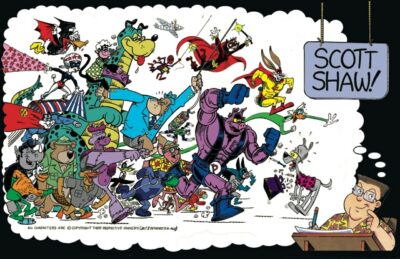
Jim: It seems like there’s some interesting crossover… We’ve talked to a lot of people, Mary Fleener recently, and Bill Stout, where they transfer music into comics. Were you super interested music person too?
Shaw!: Well, I’ve never been a musician, unlike them. But yeah, I did a really… What I think, was a really cool comic. It was a five-paged story, it was for the 50th issue of Critters in Fantagraphics, and Todd Rundgren has been my favorite musician for a long time. To me he’s kind of like a cartoonist with music. So, I did an adaptation of a song of his called Onomatopoeia, where it’s nothing but sound effects. So, on each page, I’ve got 16 panels just to keep up with it. I think I sent you a copy of that.
Jim: I’ve seen it, yes. Absolutely. I knew it beforehand. I know that piece. What about Streetwise?
Shaw!: What about it?
Jim: [chuckle]
Shaw!: I was asked to work on it. I’ve been contributing some stuff to the Jack Kirby Magazine that John Morrow’s, TwoMorrows company puts out. He asked me to do something and I think I did four strips. The third one is Bumped Just for Space, and that was a feature that I liked to call, Now, it Can be Told, as though it’s something important and obviously, it’s only because it’s an important crap that only happened to me. But it’s all funny stuff that’s happened to me, or weird stuff, or… I seem to be a weirdness magnet. So, I’ve got a lot of funny stories, and that was my first batch, and now, I’ve got an agent pitching a book of nothing but those.
I’d like it kind of a basic autobiography but it’s not necessarily about what I’ve achieved. It’s just about all things that have happened to me. [chuckle]
Jim: You’ve mentioned Sergio a few minutes ago, the two of you seem to travel in similar pathways, in terms of, both being very funny and in terms of your comics and things. Do you know him very well?
[01:50:05]
Shaw!: Well, I would imagine Sergio probably has 500 people who’ll say, he’s their best friend. But he’s certainly one of my best friends.
Jim: That’s what I thought.
Shaw!: We talk on the phone all the time. He doesn’t stay up as late as he used to. But he’s the only person I know that I could call at 3 o’clock in the morning if there’s a really good Mexican monster movie on, and he’ll pick up the phone and say, “I’ve already got it on.” We commiserate Crayola, and I’m so lucky to know the guy that I think is possibly the world’s greatest living cartoonist. I mean, there’s just nobody like Sergio.
Jim: And yet, people take him for granted to some degree, in terms of just how skilled an artist he is.
Shaw!: No, I don’t think it’s that. I think it’s the fact that he is so prolific. It’s kind of like… Because I sit next to him at Comic-Con, I have, for years. People come up, “You’re my favorite artist! Oh, what’s this?” “It’s called Groo.”… They always kind of assume that he’s always going to be there. “I’ll pick it up next time.” “I’ll buy that in the graphic novel.” Because he was out there every month in MAD, and every month in comics for a long, long time. But as I said earlier, comic fans, don’t seem to want funny stuff. Comic fans want to be about Batman showing off his penis. That’s their value of entertainment now. And I’m not offended by it. I just think it’s stupid. It’s like, come on, you’re going to get all of us without jobs if you keep doing stuff like that.
Jim: Yeah, I wasn’t impressed with the penis, at all, I got to say.
Shaw!: Yes, everybody knows that comic production knows that a number of people saw that before it went into print. So, DC claiming they were surprised is complete and utter…
Jim: Non-sense… So, in closing about your comics, I want to ask, what are some other… Because we can talk again, like your animation, we could go for hours more on this. What would be other books or other works that you did that you’re especially proud of that you’d like… If somebody said, “Show me something by Scott Shaw!, comic-wise.” what would be the other books besides things that we all know that you would say, “This is… I’m really proud of this work.”
Shaw!: Comic books… Well I’m actually quite pleased with those ads I was doing for comic books for Pebbles. Because, again, I got to make them look good and kind of unusual, and people seem to remember me doing them. But I like doing those Now, It Can Be Told’s. I like working for Bongo very much. I think those stories are a lot of fun, but the problem is, most people don’t notice who wrote or draw anything if it’s a licensed character like that.
I don’t know. I don’t think I have any secret comic that I think is the great one that nobody ever looked at… I’ll tell you one that I was really proud of, and nobody’s really seen, I did an eight-paged back-up for Savage Dragon two years ago. Mainly because I just like Savage Dragon, but it wasn’t him, it was a version… I approached Erik Larsen years ago, about doing a special, so I thought, “What if there was a character like Savage Dragon but he was done also like Little Archie?”
It’s an eight-page story I wrote and drew, and it’s kind of me, doing a Little Archie without having to kiss the ring of Archie Comics, so few people saw copies, I don’t think I even have a copy. Erik never got around sending me one, so there you go. But it was a good story and I don’t think most people saw it.
Jim: No. I don’t think I have.
Shaw!: It’s called, The Boy Without a Birthday.
Jim: I will see it… And then, finally, I just want to go back to where we started with Comic-Cons. You’ve never missed one, up until this year. Is that right? For San Diego?
Advertisement
Shaw!: No. I missed one when I shattered my ankle.
Jim: Okay.
Shaw!: I missed the 215 one, and now, Mark likes to puff up and strut around, letting everybody know that he’s been to all of them. However, not that I’m trying to create any kind of a rift between Mark and I, we’re all so very, very close. But I’ve probably been to more days of Comic-Con, because I know there was a while where he had to go back for his mom and different things. I remember there were certain Comic-Cons where he was only there maybe one or two of the days of the whole thing. So, it really doesn’t matter, it’s not like some… you know, we’re not measuring our genitals here.
I’ll tell you, the worst thing about that, was being in the hospital, and at home, and watching these TV faces pretend, like attractive female models for one of the sports channels, acting like they gave a damn about… “And here’s Captain America #1”… I mean, Comic-Con is now been appropriated by people who are trying to be hip or trying to look like they’re in on the real thing, and that drives me nuts. It’s like, I’m glad that this is no longer our little secret, but I just wish that the people that didn’t belong with comics, would just leave us alone.
Jim: It’s a tourist industry now, and it wasn’t when I first started going. That’s for sure.
[01:55:02]
Shaw!: The other thing that you have to understand is, I’ve worked in entertainment in one way or another since the 1980s. And I don’t go to Comic-Cons for the entertainment industry, therefore I really resent it. But there’s no way you can change it. They can buy a table or a hundred tables, just like anybody else. You can’t ban Warner Bros or a video game company, or anybody, from Comic-Con. I just enjoy conventions that have never attracted that kind of crowd in the first place.
I support Comic-Cons, this isn’t a slam against that. But I’m just saying, after putting up with entertainment as a job, going down to Comic-Con, kind of on a busman’s holiday, I really don’t want to have to watch entertainment beat its chest one more time.
Jim: What are you asked to draw the most? Is it Sonic? Is it Captain Carrot? What are the most popular characters for you that they request? And does it depend on the age of the people that are asking?
Shaw!: That definitely depends on the age. The older people want Fred Flintstone. The middle-aged people want Captain Carrot. And the kids that I’ve heard that I did do it, want Sonic because that’s the only character they’ve heard of.
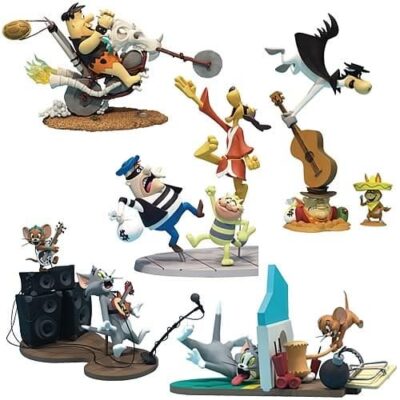
Jim: [chuckle] That’s true. And last question, did you read the Mark Russell’s Flintstones? And what did you think of it?
Shaw!: It wasn’t The Flintstones. First of all, the movie wasn’t the Flintstones either, and that’s how they drew them; to look like movie characters. By the way, Amanda Conner did the actual designs. I think she is brilliant. I love her work. And that’s one thing, comics now missed, that she has, there is appeal in her work. You look at those characters… Even The Pro, as sleazy and depressing as it is… Boy, look at the expression on that person. Look at… She doesn’t just have the seven Sal Buscema poses and expressions. She really draws well. But the comic itself…
Shaw!: Look, I got to tell you the truth… Warner Bros instructed DC, “You got to help us sell these characters. We don’t know what to do with them.” There’s a lot of pressure being put on because DC suddenly realized, “We’ve got all these IP and we don’t know how to sell them.” The new Scoob! Movie may finally be a path for them to sell it because, I’m not a Scooby fan, but that was decent. And I think people might be more interested in the characters if kind of they’re shown with Scooby first. But all that’s crap, they did with the Hanna-Barbera characters.
And I got to tell you, I’ve had a lot of friends really go after me, thinking that I somehow homophobic or angry with gay people. But making Snagglepuss gay because he was created to be a corny Shakespearean actor. If he’s so theatrical, isn’t that kind of an insult to gay people? “Oh yes, they’re all theatrical.”
Alex: Like a stereotype you mean?
Shaw!: And on top of that, the creators’ idea, in my mind, unless it’s Swamp-Thing and it were something like that where Alan Moore came and added stuff to it. But it’s kind of the creator that gets the say. I can tell you, if Bill (Hanna) and Joe (Barbera) were alive and you asked them, “Oh, is Snagglepuss gay?” They’d look at you, like you had a penis growing out of your forehead. Nobody thinks in those terms. They’re cartoon characters, they’re there to be funny and get hit in the face and fall off a cliff. I mean, they don’t have sex lives. They don’t even have genitals. They walk around with no pants.
So, it’s like, look, if you want to have a gay funny animal character, that’s great. Create one. There’s Odd Duck, or Gay Duck, (Queer Duck) I forget his name but I love those cartoons. But it’s not a gay issue. It’s a creativity issue. And I think that if people want a character with a certain message, create a character made for that message.
It’s kind of like Warner Bros a few years ago, decided that Tweety Bird was a woman because they discovered through their marketing people that most women thought Tweety was a girl and that’s why they bought Tweety jewelry and things like that. So, then they officially made Tweety a girl. Now, that Warner Bros is making new cartoons, Tweety’s a boy again.
Jim: I will say that I did like it. I wasn’t thrilled about Quick Draw McGraw being a gay policeman, and also a brutal one but I could handle Snagglepuss. It was trying to do something.
Shaw!: I’m sure you handle him where he likes it.
[chuckles]
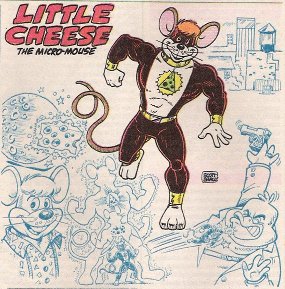
Jim: All right, so Alex, you want to do the advertising career.
Shaw!: I really like messing with you academic guys.
[chuckle]
Alex: Grab it where he likes it, Jim.
[chuckles]
I’m not going to forget that line. I’m going to use that line again… Well, that’s funny you mentioned funny animals without pants, because Jim and I don’t wear pants for these shows. That’s an interesting overlap
Shaw!: Yeah, but you’re not funny animals.
[chuckles]
Jim: That’s a really good point. You’re on fire.
Alex: I’m kidding by the way, audience. We have pants. We have very long, sturdy pants.
Shaw!: I’ve extra pants on.
Alex: We should have two pairs of pants. Yeah, we’re very pants-ed up.
[02:00:06]
So, from 1991 to 2000, you were for 10 years, at an ad agency, Ogilvy & Mather, doing commercials for things like, Post Fruity and Cocoa Pebbles cereals, all sorts of things. It was actually a very prolific 10 years. So, tell us how… Because that’s like your kind of working on your Ed Grimley, John Candy stuff at the same time, Camp Candy, the Fantastic Four stuff, while you’re also working at the ad agency doing stuff, so there’s a lot of overlap, timewise. Tell us how you got into the ad agency.
Shaw!: No, there wasn’t an overlap there. I had already done that… I mean, this was my new full-time job. I was actually working at Film Roman on a show called Grow, I think, when I took the job at Ogilvy. And that was about the same time you mentioned. But all the other stuff happened in the ‘90s pretty much.
The thing with the commercials was I was working on a lot of that stuff freelance, since about 1983. But it wasn’t me supervising anything. I was doing boards and models, and that sort of thing. Then I heard that the art director had quit, so I call them up and I said, “Well, how about hiring me?” and they said, “Well, you haven’t been trained in advertising.” I said, “I’ve done 50 of these commercials already. I know what you want.”
And I pointed out to them and said, “Wouldn’t you like an art director that actually communicates with the artists because it’s all the same person?” They said, “Yeah.” I said, “In that case, you wouldn’t mind paying me a separate fee for when I actually do the production work as a freelancer, and that way, I don’t have to mix the two jobs up.” Because I don’t have time. I’m busy selling stuff to The Post, to get it made.”… “Okay.” And that also applied to when I was doing the ads for comic books, the art on the cereal boxes, and even the little things in the cereal boxes sometimes.
Shaw!: You can only imagine how happy I was to be working on my favorite characters, and getting paid grand larceny money for doing it. And that’s the thing, I’m not bragging here, but it’s in advertising. You have no idea how much money they suddenly have when something needs to be changed, because everything is done at the last minute in advertising.
The other reason that they love me so much in that ad agency, I have a letter somewhere, I gave them a copy, from Bill Hanna. He said, “If Scott Shaw does it, it’s approved.” So, with me in the circle, they didn’t have to worry about last minute approvals. When I started, Pebbles cereal was way towards the bottom of their middling accounts. When I left, I was laid off because Post was sold from Kraft to Quaker Oats. They weren’t even sure what their campaign… And I don’t even think I’ve ever seen commercials that have animation on them.
But I enjoyed it very much. And after a while, I worked from home, so I could get a lot of other stuff done because…. I got to tell you… I must sound like a jerk and I don’t mean to. But most of the people, used to be, advertising was like the smartest, and best creators went to first because it was the most money and respect, back in the ‘50s, right?
Doing it now, I mean, when I was there, most of the time, I was spending fixing other people’s storyboards because they’d come in and, “How do I draw this?” and, “How do I do that?” I was like, “I’m not here to be the fixer… “
[chuckle]
It was kind of surprising that I was one of the only people there that can even draw, among the art directors. How can you be an art director and communicate with artists without being able to draw?
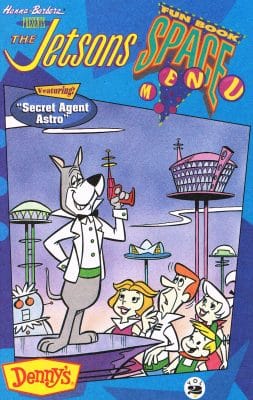
Alex: Yeah, interesting… So, that leads to an interesting question. What happened to Saturday morning cartoons? Why are they gone? And why do a lot of these cereals, don’t have, like the Honey Nut Cheerios Bee, or the Flintstones characters, or animations, or characters in the commercials for the cereals anymore? What happened to that? The party ended. What happened?
Shaw!: Well, two things. Cereal got very expensive so it’s not being bought as much. And people coming on the fact that eating that cereal will give you diabetes. I didn’t even eat that cereal, and I got diabetic just out of Karma.
[chuckle]
Honestly, I would have sold nerve gas, I really wouldn’t have cared, as long as I was told, “Here’s the budget. Here’s the schedule.” “Okay, those both sound good.” “And here’s the star.” “Oh, okay.”
Alex: Even if it’s Agent Orange, if it had Fred Flintstone, it’s fine.
Shaw!: I once, worked on a bunch of Simpsons commercial for Japan because they were the color of the product.
Alex: I got you… So, cereal became less glorified because of its high sugar content, and bad health side effects. What’s the second thing you’re going to say?
[02:05:05]
Shaw!: Well, just the fact that it became so expensive, so a lot less people are buying it.
Alex: What about as far as Saturday morning cartoons? Now, what I had read was an article that, through a couple of sequences, the one thing that Bush Sr did, and Clinton also did, that both of these legislations made it harder to fit X number of advertisements within one 30-minute cartoon, so then it was no longer the money was around to then make those Saturday morning cartoons, because there’s advertising limits that were set in the ‘90s. Is that what led to the death of the Saturday morning cartoons officially?
Shaw!: No. I think it was Nickelodeon.
Alex: Okay. Tell me about that.
Shaw!: Nickelodeon was the first cable station that I’m aware of that devoted themselves to children. And on top of that, they really knew how to brand themselves. They were kind of like Jay Ward and Hanna-Barbera thrown into one because they were only the new studios when I was a kid, therefore they were like the cavalry. We would watch anything from either of those studios, not even because they were good, but because they were new.
The same thing was the case with Nickelodeon. All these kids had seen not only a lot of cartoons, but by that time, cartoons were pretty mediocre. I mean, the Smurfs were probably the widely-est thing on the air and they were still teaching you “a very important message”.
So, the Nickelodeon stuff, they didn’t have any of that. They were just funny and weird, and unique. And kids could watch them any day of the week. I think initially, they were on Saturdays maybe, but I know eventually, Nickelodeon had cartoons on, all the time. And if it wasn’t those shows, it would be other shows like KaBlam! and things like that.
Jim: I have a cartoon question related to that because I’ve taught Flintstones before, in a Saturday Morning Genre class. And one of the things that we talked about was that the network, when the Flintstones transferred over from primetime over to Saturday morning cartoons and basically, that was starting to be created. Progressively, with each new spin of Flintstones, they would kind of get less and less of the dual purpose where adults could enjoy it at one level and children would enjoy it at another level because you talked about not the Flintstones, but the original series had things like infertility as topics, and adoption, and things. They were interesting aspects.
Shaw!: That was in one episode, Jim. And all they said was, “Oh, let’s make a wish that we have a baby.”
Jim: But there was a court battle. There were custody battles, because I pay attention to such things. But that was not the only one. There were weight issues with Fred Flintstone, there were certainly things that adults would follow on that.
Shaw!: Not after the second season of the Flintstones. I’ve been watching them.
Jim: I agree. Well, I’d say Season 3.
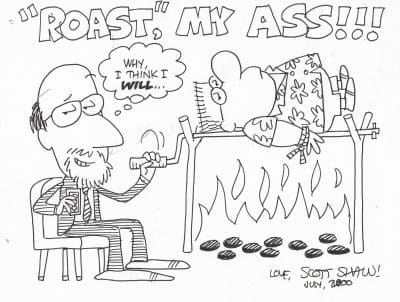
Shaw!: The extra episodes beyond second season was where Pebbles was introduced. They have about eight or nine episodes where Fred is trying to learn how to be a dad, and those are actually funny. The animators are still kind of pushing it. But from that point on, and I didn’t even notice this when I was a kid, but I certainly notice it now. Most of those scripts with the exception of adding rock or stone on the ends of names, they took all of their best animators and all their best writers, and put them on the new shows. Because, “Oh, Flintstones is a success, we don’t need to worry about it anymore.”
And the writing, especially when they added Bamm-Bamm, was completely for children on that show. Almost none of the stories were about domestic issues anymore. The Flintstones always had enough money to go on vacation, because it was the one-way for them to meet surfers or rock stars, or whoever. The whole thing changed because suddenly, it wasn’t about the honeymooners.
Jim: We can debate Season 3 just a little bit, and we will, at the next convention. I promise. But you’re right, it’s primarily that episode is what I’m recalling. But, my point is, what I have heard and what scholars have written about, is that, what would happen was that the network wanted to exorcise all adult material from all of these cartoons, and gear them more and more towards young children, because they wanted the ratings to not have adult watchers. That it was about focusing it solely on, with the demographics were all about young children, and that was for advertising and commercial purposes.
Did you ever get a sense of that in any of your workings?
Shaw!: It’s the first time I’ve ever heard about it.
Jim: There’s a lot of writings on it, and a lot of people that acknowledge it. That’s interesting.
Shaw!: Nobody’s ever made an issue of that with me. And I’ve always tried to put as much adult stuff into them, as much as possible, especially on Muppet Babies. We’ve gotten away with an awful lot of stuff.
[02:10:04]
Jim: Oh, yeah. I’m only talking about the Flintstones. Because, as they went to Shmoo and then other things, and then they began to regress to the Flintstones Kids and that kind of thing.
Shaw!: By that time, it was already in the toilet. All the Saturday morning stuff was crap. You got to understand, that was all crap.
Jim: What I’m suggesting is, that was deliberate. That they wanted it to be crap because they didn’t want adults to be able to stand to watch it.
Shaw!: That’s when they hired me again.
Jim: [chuckle] I’m not suggesting that about you.
Alex: Jim, what are you saying about our guest? [awkward sound]
Jim: All right. Hey, why don’t we talk about Oddball stuff.
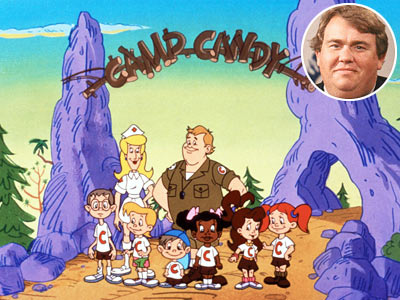
Alex: Oddball Comics… Now, you had mentioned, Scott, that you’ve been working on Oddball Comics, and your comic history analysis for the past 40 years, there’s a 10-year run where you were doing some online stuff on comic book resources. Recently, you have some articles in RetroFan Magazine for TwoMorrows. Tell us about Oddball Comics, and your whole other career as a comic book historian. Because not only can you draw, you can write, but you can also speak and analyze, so tell us about that.
Shaw!: Even as a kid, I liked the weird comics. I bought all the Marvels and all the DCs, and all that sort of thing, but I for example bought Kona, Monarch of Monster Isle, some of my favorite. I liked anything with dinosaurs or gorillas on the cover.
It’s really funny because Irwin Donenfeld, he believed the same thing but I guess it worked because that’s where I saved my pennies for, was dinosaur comics. I remember collecting right off the racks, every issue of Kona, every issue of War That Time Forgot. I had one of my first comic subscription was to Rock & Stone.
I like popular stuff, but I always had stuff that way particular to what I liked. And it turned out that that stuff was kind of the nutty stuff. And then I get to running a comic book store, and working with these guys, and even going to comic conventions, even just Comic-Con itself. I was seeing lots of comics that I wouldn’t normally see. It was like when I worked for B Dalton Book Seller, as the shipping clerk. I’m unpacking boxes of books and finding out that I was interested in a lot more things than I realized. Same thing when you’re exposed to comics.
First of all, the fact that I never sneered at humor comics gave me an awful lot wider range of stuff that I was looking at. And then when I became a cartoonist, even a crummy cartoonist, I was really looking at the stuff and I was realizing, “How come on this run of Lois Lane, every cover has something pointing to her crotch?” I found out years later, that was when Joe Orlando was telling everybody, sex sells. And that was after that book about the subliminal advertising. But instead of subliminal, he made it absolutely obvious. I mean, Lois is holding a spear at Superman’s crotch and it’s dripping something white. “Oh, she just took a sperm sample, nice”
Alex: So, before Sharon Stone in Basic Instinct, there was actually Superman’s girlfriend Lois Lane, you’re saying.
Shaw!: Exactly. But there’s tons of stuff like that out there. But it’s not just all dirty. Essentially, you look at it, you go, “How the hell did this get published?” Because some cases, it’s a bad choice of dialog. For example, that famous one with, it’s Betty and Me, and she’s saying, “Oh, Archie, thanks for rescuing me.” And he says, “Yeah, I had to beat off three other guys to do it.”
Alex: [chuckle] Well, when you read it, it doesn’t, but when you say it the way you’re saying it.”
Shaw!: Well, how else do you say it? I mean it’s written exactly like that, and the term beat off is in bright red letters.
Alex: I can’t stop laughing every time you say that phrase. I don’t know what it is. It’s like a button.
Shaw!: Don’t say that. [chuckle] Get the women in on this… I think that comic came out in ’65, which meant I was 14 and somebody I showed went and said, “Please, that probably just wasn’t even a term for that back then.” I said, “I had first-hand information.”
[laughter]
Alex: Oh, that’s cool. So, that actually was the term back then. That’s awesome.
Shaw!: There’s also Jughead’s Eat-Out, that’s another comic.
Alex: [laugh] I can’t stop laughing when you say these things.
Shaw!: And then there’s that famous Rifleman cover where he’s holding that log up at a suspicious angle, and this TV kid looks like he wants to get the hell out of there as much as possible. Meanwhile, Chuck Connors is like, “Hey, check this out.” It’s like…
Advertisement
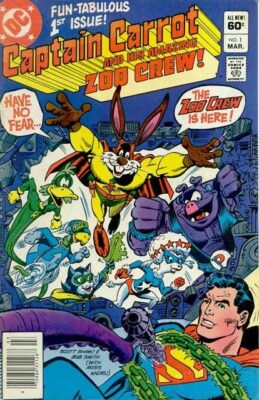
I actually asked… Can’t think of the actor’s name that played his son, but he said, “I don’t remember a thing about that.” And I would he would because a lot of those photo covers for Dell, and Gold Key Comics, they actually just had the actors in town and they’d like… Take the Three Stooges and say, “Okay, let’s go down to Western Costumes, see what you want to put on.” Westerners, or dressed like genies or whatever. They’d go back for a couple of days and shoot the next three weeks’ worth of covers. Because they didn’t want to have to use those crappy little black and white stills they always use for publicity and stuff like that. That’s not going to sell a comic.
[02:15:02]
Although, you remember a lot of comics that did like the colorful cover. You’d try to find the hero and he’s like this black and white guy, kind of like in a little cameo stuck in some place because they’re like, “Well, I guess we have to use this.”
Jim: Scott, you’d mentioned a few people like, with Little Archie, like with Bolling and John Stanley, and stuff. One that I wanted to ask you about, and it certainly fits with the Oddball Comics is Ogden Whitney and Herbie.
Shaw!: Ogden Whitney is the perfect guy to draw Herbie because it’s like his drawing style is not comic book style. It’s like the guided illustrates brochure on how to give yourself some medical operation or something. I mean, it was so institutional. When he tries to draw funny, it’s not funny. But when he just draws like himself, it’s really funny. They got Kurt Schaffenberger to start doing covers towards the end. And those weren’t nearly as good because they were too well drawn. The only guy I always thought could’ve taken over Herbie, that had that same institutional look, would have been John Forte.
Jim: Oh, and you mentioned Chic Stone earlier, and Chic Stone was working for those guys. Not for that but for Nemesis as well.
Shaw!: Yeah, I wrote the introduction to the collection of Nemesis and I think the collection cost more than if you went out and bought the comics themselves. Nobody wants those. Nobody.
[chuckles]
Jim: I love those guys. I love the costume; I love everything about that comic.
Shaw!: You liked it because he stole the Phantom’s shorts.
[chuckle]
They both wore striped shorts and stripes don’t appear anywhere else in their costume. I’m surprised DC didn’t have somebody wearing go-go checks for pants. Remember when they put those go-go checks across the top of each cover?
Jim: Oh, yeah. Yeah, and it seems like it would have popped up in the Age of Heroes at least once.
Shaw!: Well, it always killed me because it’s like you’re using valuable space for a thing that doesn’t say comics at all. But they seem to think it worked, for a couple of years.
Jim: No, it said, “Professional Car Racing” much more than it did comics.
Shaw!: Exactly. Those guys don’t read comics.
Jim: [chuckle] Maybe Alex Toth’s Hotrod?… I don’t know. Probably not.
Shaw!: Look, Toth used to work for cartoons in those automotive humor magazines. A lot of guys did. Russ Manning did.
Jim: Did Ditko do anything for those?
Shaw!: He worked for Cracked. He loved Charlton. I was going through, scanning some books last night, it’s amazing how loyal he was to Charlton considering… I guess they’ve just taken anything he drew.
Jim: And not ask him about it, not interfere with it, which of course, would be what he would care about.
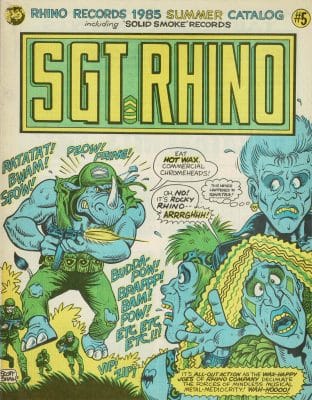
Alex: Yeah, I think he was used to like exercising his comic art form every time. Experimenting things.
Shaw!: Yeah. Yeah. Although I really do love some of his humor stuff. He did some of those Gorgons and Kongas. He tries to draw them funny and he’s really good at it.
Jim: He actually has a very good sense of humor in some of that stuff. He does a lot of one-paged cartoons that would surprise people, because they take him so seriously.
Shaw!: I have heard they hired them to do comics and storyboards for Tiny Toons. I’m not making this up. Tiny Toons, Ditko did some work on that show.
Jim: I never hear that before, tell us about it. Well, that’s news.
Shaw!: I thought you hear lots of things.
[chuckles]
Seriously, I’m not making this up. It’s a guy that I know that likes kind of to hire people that he doesn’t know will be able to do the job. And then if they don’t then he just does it himself. Sometimes, it turns out horribly, but Ditko’s comics were for overseas, with all those characters like Plucky Duck, and he drew all of them pretty well, but they all had that Ditko vibe to them which I didn’t think worked very well. Because they all immediately looked kind of psycho, you know…
Jim: [chuckle] No, we know. I’ve seen the Big Boy Comics. There’s something off about it.
Shaw!: I’ll tell you something that’s going to horrify everyone that manages to get this far into this thing. When I was a kid, I was buying Gorgon and Konga. I knew Steve Ditko’s name because he signed those things. When the first issue of Spider-man came out, I never saw Adult Fantasy #15, but a neighbor gave me a copy of that Spider-man because he didn’t like the first one. I read through it, and I thought, “This comic is so cheap. Somebody must have printed this in their basement.”
I cut it up with an Exacto knife. I have never done anything with a comic remotely to cut it up, or deface it or anything. And it was one of those Saturday or Sunday afternoons where you’re 13 and you can’t get anybody to drive you anywhere. I just traced every frame with the… Cut it out. And I cut out each tag.
Jim: [chuckle] Oh, no.
Alex: That sounds like something from Jeffrey Dahmer’s house.
Shaw!: Well, I could’ve gotten a job in Marvel’s production department. I was so good with cutting it apart.
[chuckle]
That was hard.
[02:20:07]
Alex: That’s like something out of like what Ed Gein used to do, you know, in his cabin. But you do that with the Ditko comic.
Shaw!: Yeah. No blood.
Alex: You didn’t make a necklace out of the panels.
Shaw!: Nah, I just tossed them in the trash. I think the thing that offended me most was I hadn’t had the comic for more than five minutes, and cover ink was coming off in my hands. Because that was early, when they weren’t coating the paper stock so there was nothing to prevent the ink from coming off in your hand.
[chuckle]
Jim: So, Scott, two questions to sort of begin to wrap up, or wrap up. One, where does the exclamation point come from and how long have you had it? And secondly, what current or new projects have you got that fans ought to know about?
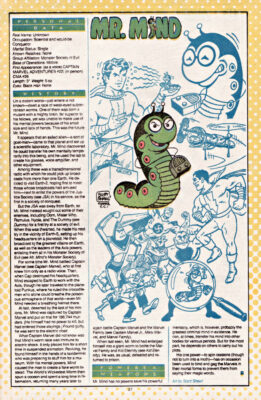
Shaw!: Like I said, I was born in ’51, so by the time I was in junior high school, there were a lot of movies. Atari! was one of them, Dinosaurus! was a few years earlier. A lot of movies with one word and an exclamation point. But then, I was really into the, not car culture but just the Big Daddy Roth style monster car culture. And a second guy started doing it, who I never realized actually started doing it before Roth, a Stanley Miller from Detroit, who called himself Mouse!, with an exclamation point. And those ads started appearing, when they started doing model kits of his stuff.
And that’s who I stole it from. Because I thought, it’s not just that this guy is doing it, but that’s how every sentence in comics ends, unless it has a question mark; I wasn’t talking about Classic Illustrated that had good English. But I thought too, this just goes to show how excited I am about drawing cartoons. I started doing that probably in seventh grade.
Jim: So, nothing to do with Rifleman, it’s not a penis. There’s…
Shaw!: No, no. But I could make it one.
Jim: [chuckle] If we do a part two, we’ll have that.
Shaw!: I could start drawing it that way, if that’d get more people calling.
Alex: Yeah, well you’ll have to kind of make it kind of veiny then.
Shaw!: I’ve got a lot of S. Clay Wilson comics.
Jim: There you go… What are you working on, currently?
Shaw!: I just love dragging you guys down into my cesspool. This is wonderful.
Jim: Yeah, I’m going to feel bad when my son insists upon listening to this.
Shaw!: Aren’t you glad I wasn’t my real self… Things I’ve been working on, let’s see. Well, I’m finishing a sequel to a book I illustrated a few years ago, I didn’t write it. I’m kind of involved with the writing on this one. But it’s called Marooned Lagoon 2… Let me show you a picture from it.
Jim: Oh, that is beautiful… Look at that cat.
Shaw!: These are two-paged spreads that I did. It all takes place in the Everglades swamp, and a hurricane comes through and gets all the kids separated from their parents. And everything’s mixed up, so they don’t know what any thing is. So, they’re trying to make stuff out of the debris. I mean, it’s very visual.
I’ve also got a number of graphic novels that I developed and I’m trying to get a publisher to take up but right now, I don’t think anybody’s making any decision. Other than that, I am working on my Oddball Comic book, which will be out, who knows when, but it’ll be out. And I’m doing commissions, once in a while.
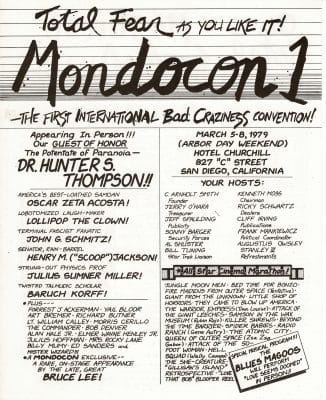
I haven’t been approached by any studios or any comic book companies for a while, and quite honestly, I’m kind of more interested in creating my own stuff right now, anyway, than doing other people’s stuff. I know that’s what people say when they run out of people trying to hire them, but I’ve kind of drawn all the characters that I wanted to draw of other people’s, now, I want to draw more of mine.
Jim: I wanted to tell you that when I told my son, and this is what you did for him, which we framed… And he looks at it all the time. He used it for show and tell, on Zoom, recently, and told the story.
Shaw!: You had that behind you all this time. I was looking on the walls to see how you had two of them.
Jim: Yeah. No, no, there it is.
Shaw!: Okay. Well, I should go correct that.
Jim: [chuckle] When I told him that I was going to be interviewing you today, he said, “What do you mean? He’s my friend. He’s not yours.”
[chuckle]
Shaw!: I’ll always remember Willoughby because I like Twilight Zone.
Jim: Well, that’s why we named him that. “The sunshine and sunlight in serenity.” That was the line that made me think that’s a good name for Willoughby.
Shaw!: Well, that’s very good. That’s very nice.
I know you’re trying to shut down. I have a good Rod Serling story for you. But we’ll do that next time.
Jim: Oh, no. Absolutely.
Shaw!: Well, I met Rod Serling when he was lecturing at colleges. I also met Al Capp the same way. And they had the same reaction to my question. I asked Al Capp what’s it like working with Frank Zappa. “Frank Zappa, that would have been…”
[chuckle]
Serling was actually supposed to be promoting Planet of the Apes and Night Gallery, he actually was apologizing for both of them because he felt that Night Gallery was awful, which I think is true. But he was even apologizing for Planet of the Apes because they’ve changed the scripts significantly.
[02:25:02]
My question was… Completely out of the left field, “Were you ever influenced, when coming up with your stories for Twilight Zone, by EC Comics?” Capp said, “What the hell does a hippie know about Frank Frazetta?”… And Serling said the same thing, “What the hell does a hippie know about EC Comics?”
[chuckles]
“I’m a cartoonist, and a comic collector and…” I said, “They’re all based on kind of O. Henry type stories so I figured maybe you have science fiction writers writing as they’ve probably read those comics, because they had Bradbury stories.” He goes, “I want you to come down and see me in my dressing room after I’m done.”
So, I came down, and I walk in, and he goes, “Of course, they were EC Comics. We were absolutely inspired by them. Most people don’t know that.” I said, “Well, I just kind of figured that sci-fi guys are going to know that stuff.” He goes, “Of course, we do.” And we talked for about 10 minutes and he was absolutely cranky and receptive, and very short.
Alex: You got the confirmation. That’s awesome.
Shaw!: Yeah, well, I think still, back then, were surprised that people were knowledgeable about that stuff.
Jim: And what did Al Capp say when you went to his dressing room after?
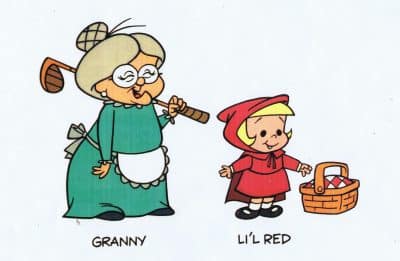
Shaw!: No, he didn’t invite me. In fact, the only reason I got to ask him that was he came out to UC San Diego, and was speaking about, trying to raise more controversy because he was the guy that stood up against hippies. So, he was getting all these people showing up, and he was getting in the news a lot. That’s what he was looking for.
So, he got to this thing and he started out, and he said… He was actually very funny and chipper, and he was kind of jousting with the kids, rather than acting insulted. And then all of a sudden, he said, “Okay, one more, and you’re up, sir, and I’m leaving.” Like out of the blue. I mean, he seemed to be enjoying it.
So, everybody shut up and one guy… [slow clap] did that slow clap, and he turned around, it was in the gymnasium, and he turned around and walked across the court and walked in a little door and slammed the door shut. And everybody said, “Okay, screw him.” And they all got up and left. Except for me and my fanboy buddies who were all sitting in the front row, and we’re looking at each other like, “What the hell?” And we sat there for about 10 minutes. It’s kind of, “Well, maybe we can now… He’s not going to come out?” “Why did he do that for?” We don’t know.
And we hear walking… A very odd gait because of his… And I now know what it’s like to have an odd gait, with a prosthetic foot… And it’s Al Capp. He never told us this but as an adult, it think somebody must have said, “You’re not getting paid your honorarium unless you go out there and give a speech.” And it was to 10 of us, and we were all comic nuts.
Quite honestly, I knew he hated hippies, but I didn’t care. I didn’t know he was a guy that preyed on women, I don’t think would’ve liked him as much. I didn’t care that he hate hippies. I kind of expected to be hated, but I love who I am… And I still love Li’l Abner, you can’t say that aloud. Oops… But I mean, it’s one of the most brilliant, most dour, cruel comics about how cruel mankind is, of anything I’ve ever read. It’s also how I found out I like girls.
Alex: Because of Daisy Mae?
Shaw!: No. Actually, all the women, even Mammy, that Popeye’s head but a woman’s body. [chuckle]
Alex: She had a nice body, yeah. Yeah. It’s interesting. I was reading some of that old… Because Denis Kitchen reprinted some of those. It was interesting like one continuity, was like the plot to The Waterboy movie. And then another continuity, was the plot to Billy Madison. And I was like, “Whoa dude, there’s a lot of like comedy gold.” And there’s like hundreds to thousands of these stories.
Shaw!: If it’s comedy gold, how come it’s lining up in Adam Sandler movies?
[chuckles]
Alex: But it is. I just thought like that’s crazy. I’m like, “Oh, my god, it is like three Adam Sandler movies I’ve read already in just the first year and a half.”
Shaw!: Well, I’ll never forget it as a kid. I was just shocked. Because I was kind of used to comics being funny. He’s stuff is kind of funny but I remember Lil’ Abner someway fell down a bottomless pit. And they’re all like, “Wow… Wow… “ And then they all just walk away. “What’s for dinner?” and they all, “Porkchop.” I’m thinking, “Aren’t they even going to try to help him?”
[chuckles]
Advertisement
I mean, he didn’t know how women worked but he knew the cruelty of mankind. And that’s what I dig about him. And he sold it in the weirdest way possible. That, boy, you read that and it’s obvious how he does not respect the human race, and probably for a good reason.
Alex: And then also what he did with Chester Gould and Dick Tracy, with the Fearless Fosdick character. It’s like he really was able to make fun of Chester Gould, and then reduce the value of Dick Tracy as a strip, based on his ridicule. Like he had a lot of power.
[02:30:01]
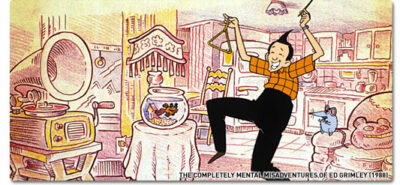
It was kind of evil… But fascinating.
Shaw!: Do you think that hurt Tracy?
Alex: Yeah, I think so.
Shaw!: Dick Tracy was never out selling cream oil I think of him as radically different. Dick Tracy’s one of my favorite strips too.
Alex: For sure, me too.
Shaw!: So surreal, and I actually, I like the classic stuff, but I like the stuff that’s like the Oddball Comics stuff too.
Alex: Like the ‘50s Dick Tracy then or what?
Shaw!: Where it was like he was trying to be contemporary but it just looked like he was losing his mind? The Pouch is my all time weird… That should be in underground comics.
[chuckle]
The face… You know… No. I won’t go into it. But no. [chuckle]
Alex: Yeah. I love the Tracy stuff. I love the ‘30s stuff, and The Blank, and all that. I could actually keep reading Chester Gould too. I could just read that for a couple of years and I’d be fine.
Shaw!: By the way, if there’s anybody out there, that wants to sell about the first half of those IDW books… I just finally bought a set and half of them got lost in the mail.
Alex: Oh, no.
Shaw!: Yes. I am absolutely despondent. Except, I finally now have all the ones that I have, reread. I bought those mainly because I thought, “Now, I can get rid of all those black foreign ones, with all the other stuff I’m getting, now I’m at the part where I got to try to make room in my house.
Alex: But yeah, the early stuff’s pretty interesting, because you have references to the Lindbergh baby, in one continuity. And you have like a Jeff Hoover type guy in a couple of them.
Shaw!: It’s straighter and based on reality. I once sat with Ron Wilson. I said, “I love your stuff but I can’t figure out who’s your inspiration.” And he goes, “Oh, Chester Gould.”
Jim: Oh, of course. It makes sense, when you say it.
Shaw!: Yeah. I said, “Oh, you were only looking at the villains.” And he goes, “Not, really.” [chuckle]
Alex: And I just love how horrible things happen to the bad guys. Like, this one really horrible person and then like a bear eats them in the forest.
Shaw!: My favorite, I forget who it is, but they’re trapped under something that is blocked by a cake of ice, and there’s this big nail through this beam, and it’s like here… Not going in to his eye but it’s like here. And he must have spent six weeks having this ice cube melt. And it’s like, “Nobody can get away from that now.” I mean it is so intentionally creepy.
Alex: It is, yeah. That’s why I love it.
Shaw!: You ever heard the story about R. Crumb and Jay Lynch going to visit him?
Alex: No.
Shaw!: Because they were both hippies, but they like, you know what I mean, whether you’re a hippie or not, if you like comics, even if he is a serious right-wing guy, if you like his comics, suddenly you’re his pal, right?… He didn’t see them as his pals. And I think it was Jay, he asked him, and he says, “Something about, in your comics, because everybody is drawn kind of grotesquely, how do we know which ones are the good guys and bad guys?” Gould really shot him a look like he wanted him to die, and he said, “If you don’t know the difference between the good guys and the bad guys, you’re one of the bad guys.”
[chuckles]
Alex: I love that.
Shaw!: And you know he had this fake graveyard behind his house. They were worried that they were going to wind up there. He made little cardboard tombs and had there all the bad guys’ names on it that he killed them.
[chuckle]
So, he wasn’t exactly King of Sanity either. [chuckle]
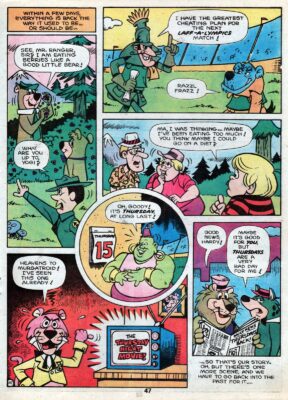
Alex: That’s funny. He had a fury going on in there. That’s interesting. That’s good insight.
Shaw!: But no body draws like him. I mean, the interior of a car, the seats are like 20 feet wide. You know what I mean? I just love the way his stuff looks.
Alex: I love when The Blank is killing people and it’s a different way every time that he kills another criminal. Like he ties a guy under a car, closes the garage and let the carbon monoxide kill him, right? Throws another guy out of an airplane, crashes into a farm. It’s like… And then another guy, he shoves out a moving car and his rolling, his neck breaks on a pole. [chuckle] It’s like, “What?”
Shaw!: He spent an awful lot… Too much time thinking about how to kill people. I think it affected his judgement. [chuckle] “I can’t do that one again.”
Alex: Oh, yeah. “Better come up with something new.” Yeah. Oh, that’s great. We could easily chat all day, and I had a great time. But I’m going to do a little close out, conclusion, if that’s all right with you guys.
Shaw!: Absolutely. But thank you, Jim and thank you both. This has been a lot of fun. Thank you for letting me run my mouth.
Jim: Oh, we had a blast. This is great.
Alex: And you’re multi-talented, it’s interesting because you’ve worked in various media but it all comes with that same cartoon creative spirit. I see why you have so many different awards in all sorts of variety of things because it just comes down to you wanting to do something new, and different each time. And I’m thrilled that I grew up on a lot of these stuff that you made; the cartoons, the commercials, they were huge influences on me. So, thanks so much for being here today.
[02:35:05]
Jim: And I like you much more than any of Willoughby’s other friends. I got to say.
Shaw!: Okay. Well, I’m sure they all drive you crazy but…
[chuckle]
Jim: Well, I can talk comics with you. None of them read comics, unfortunately.
Alex: And they call Jim, grandpa, it’s not really fair.
[chuckles]
Jim: That is not remotely funny.
[chuckle]
Shaw!: I had my son, when he was young too. And it was weird going to PTA meetings, and all the parents were like kids to me. It’s just strange.
Anyway, thank you both. I hope we see each other at Comic Fest next year if you can come out. That maybe the first show I might be willing to go to. If things have calmed down by then.
Jim: I’m so glad we went last year. Because it was a way to say goodbye to so many… We didn’t know we weren’t going to see people or friends for a long time.
Shaw!: You leave that show with a smile on your face every time.
Alex: Yeah. That’s what happens.
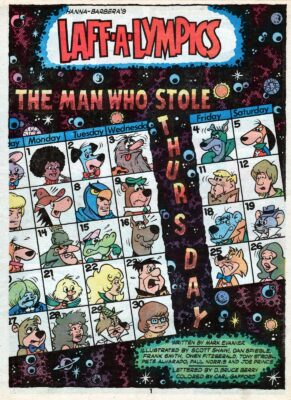
This has been another episode of the Comic Book Historians Podcast, with Alex Grand and Jim Thompson. Thanks again, Scott Shaw! for your creative contributions to Americana, as well as being a guest on our show.
Shaw!: Thank you very much… I didn’t know if I was supposed to say anything or not…
[laughter]
Jim: Yeah, I never know that either… Should I say goodbye?
Alex: [laughs] I love it. They say communication and clarity… I’m good at both.
All right. Take care everybody.
[02:36:29]
© 2020 Comic Book Historians
